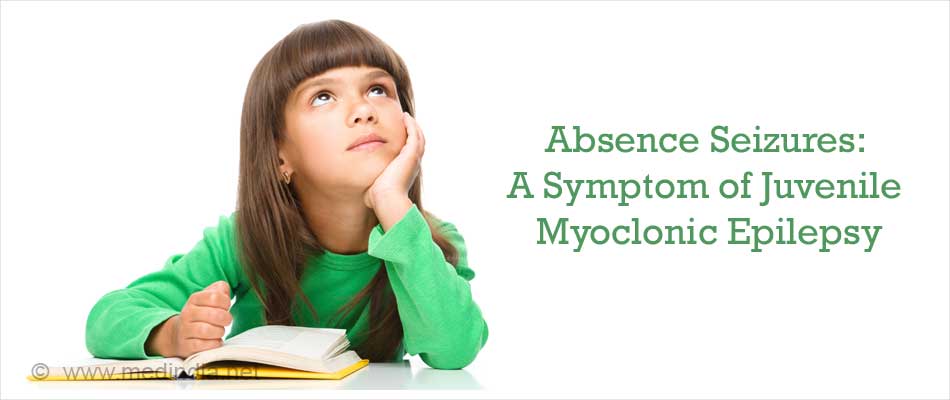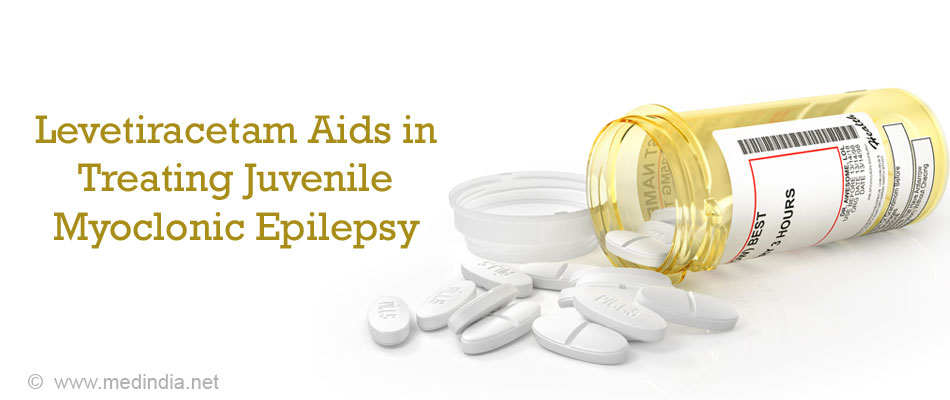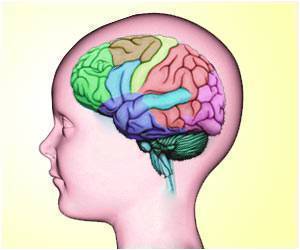- Juvenile Myoclonic Epilepsy - (https://ghr.nlm.nih.gov/condition/juvenile-myoclonic-epilepsy)
- Boulenouar Mesraoua, Dirk Deleu, Hassan Al Hail, Gayane Melikyan and Heinz Gregor Wieser (2014). Juvenile Myoclonic Epilepsy: An Update, Epilepsy Topics, Prof. Mark Holmes (Ed.), InTech, DOI: 10.5772/57431
- Harden C. Juvenile Myoclonic Epilepsy—What Does the Future Look Like? Epilepsy Currents. 2014;14(3):150-151. doi:10.5698/1535-7597-14.3.150
- Wolf P et al. Juvenile myoclonic epilepsy: A system disorder of the brain. Epilepsy Res. 2015;114:2-12.
- Wandschneider B et al. Frontal lobe function and structure in juvenile myoclonic epilepsy: A comprehensive review of neuropsychological and imaging data. Epilepsia. 2012;53(12):2091-2098.
- Genton P. The history of juvenile myoclonic epilepsy. Epilepsy & Behavior. 2013;28(1):S2-S7.
- Koepp MJ et al. Concepts and controversies of juvenile myoclonic epilepsy: still an enigmatic epilepsy. Expert Rev. Neurother. 2014;1-13
- Bazil CW. Introduction to sleep and its disorders - Nocturnal seizures. Sem Neurol. 2004;24(3):293-300.
- Britton, April, "Juvenile Myoclonic Epilepsy" (2015). MSN Student Scholarship. Paper 76.
- Atakli D et al. Misdiagnosis in JME: Still a problem after 17 years? Seizure. 2016;36:27-30.
- Park K et al. The value of video-EEG monitoring to diagnose juvenile myoclonic epilepsy. Seizure. 2009;18(2):94-99.
- Crespel A et al. Management of juvenile myoclonic epilepsy. Epilepsy & Behavior. 2013;28:S81-S86.
What is Juvenile Myoclonic Epilepsy?
Juvenile myoclonic epilepsy (JME) is an epileptic condition that develops in children and adolescents, invariably between the ages of 8 and 26 with most of the seizures occurring between the ages of 12 and 18. The frequency in the population is between 3% and 11%. JME is also called as Janz syndrome.
Herpin was the first to identify JME in a patient in 1867. However, it was only in 1985 that the condition was included in the initial proposal of the international classification of epilepsies and epileptic syndromes. In 1975, the International League Against Epilepsy formalized the name Juvenile Myoclonic Epilepsy. Of all the genetic/idiopathic (unknown cause) generalized epilepsies (IGE), JME is the most common form and accounts for 10% of all Epilepsies.
The condition involves sudden irregular, single or repetitious jerks in both the arms, and the patient may suddenly fall although there is no visible loss of consciousness. The condition is observed equally in both sexes though there appears to be a distinct predominance in women.
What Causes Juvenile Myoclonic Epilepsy?
Juvenile myoclonic epilepsy is considered a complex genetic condition and is the result of interplay of different genes. This may explain the variations in the clinical presentation of the condition. The exact gene that causes the condition is unknown. There are repeated seizures (nocturnal seizures), especially in the waking hours of the morning, which can sometimes be due to awakening earlier than usual or due to insufficient sleep.
Other causes for epileptic seizures are:
- Alcohol consumption
- Exhaustion
- Flashing lights
- Stress
- Thinking
- Music
- Fever
- Reading
Sensitivity to light and its influence on seizures is influenced by age, but it is not a very common source of epileptic seizures.
What are the Signs and Symptoms of Juvenile Myoclonic Epilepsy?
Juvenile myoclonic epilepsy may show the following features.
Myoclonic jerks – These uncontrolled and rapid jerks occur mainly in the arms and are sudden, spontaneous, isolated, in clusters, or short arrhythmic jerks as if the person is clumsy and prone to dropping objects. These seizures are caused by mentally stimulating tasks. These jerks may also affect the trunk and the lower limbs.
Generalized tonic-clonic seizures (GTCS) – Generalized episodes of seizure may be accompanied by repeated myoclonic jerks. These seizures are also known as grand mal seizures. There is loss of consciousness, rigidity of muscles, and convulsions.
Absence seizures – Staring periods where the individual loses consciousness for a brief period. These seizures arise due to hyperventilation.

How do you Diagnose Juvenile Myoclonic Epilepsy?
Diagnosis of JME is based on occurrence of myoclonic jerks, an EEG or video-EEG. There are 2 criteria proposed by the international workshop on JME to accurately diagnose the condition.
Class I criteria: Myoclonic jerks with no loss in consciousness either during or following awakening;
- Age of onset – 10 to 25 years;
- Association of jerks with EEG abnormalities (~3-6 Hz) of epileptic nature.
Class II criteria: Myoclonic jerks that occur mainly after awakening;
- Age of onset – 6 to 25 years;
- EEG abnormalities (~3-6 Hz) with or without myoclonic jerks.
The EEG typically shows a characteristic pattern with generalized 4–6 Hz polyspike and slow wave discharges. These changes are often induced by photic stimulation (blinking lights) and sometimes hyperventilation.
Misdiagnosis: Some cases with unilateral myoclonic jerks and EEG readings may be misdiagnosed. Sometimes, a patient may have the clinical symptoms of jerks but the EEG may be normal.
To avoid misdiagnosis, EEG readings should be taken during the awakening stage and during sleep.
However, EEG has a diagnostic accuracy of only 50%. To correctly diagnose JME, it is recommended to use video-EEG monitoring for 1 or 2 days in patients who present with a normal EEG or have an unusual epileptic presentation.
How do you Treat Juvenile Myoclonic Epilepsy?
Juvenile myoclonic epilepsy can be treated with medications. However, not all antiepileptic drugs (AEDs) are effective with some patients developing resistance. Hence, combination therapy is recommended in such cases. The drugs used are:
- Valproate – The recommended drug for all patients (women and men). Valproate is not prescribed to childbearing women and those with bipolar depression or migraine. The recommended dosage is 1000 mg to 2000 mg per day. One of the products, include divalproex sodium.
- Levetiracetam – This drug has been effective in treating JME. Women in the reproductive years may also take this drug. Lamotrigine (LTG) – This drug cannot be prescribed as a first-line drug like valproate but it is useful in patients with associated conditions, such as psychiatric conditions and migraine. Young women also benefit from this drug. This drug is relatively safe for women with childbearing potential.

Other commonly prescribed drugs for JME include zonisamide, topiramate, piracetam, acetazolamide and Methsuximide.
It is a clinical challenge to treat women of reproductive age. Valproate is one drug that is not recommended to pregnant women.
How do you Prevent Juvenile Myoclonic Epilepsy?
- Psychotherapy: Patients with JME have cognitive and social difficulties. If patients have psychiatric disorders, then they tend to develop drug-resistance. Cognitive behavioral therapy, psychotherapy, and anti-stress therapy help to prevent seizures in patients with JME.

- Lifestyle routine: Patients with JME should follow a good lifestyle to avoid risk factors for the condition. Patients should follow a good sleep routine, drink only small quantities of alcohol, take their medications regularly, and avoid taking a bath for 2 hours following an abrupt awakening process or after insufficient sleep. Since seizures occur due to stress, patients should avoid driving when they are exhausted.
- Stimulation of the vagus nerve: There have been favorable results reported with this form of treatment. However, in the absence of large-scale studies, this treatment cannot be recommended as an option for JME.
- Light sensitivity (photosensitivity): Increased color fluctuations on a television screen, light rays of the sun that get reflected in water or pass through trees are some ways that can trigger JME. It is recommended to wear blue lenses to temper the effect of light. Levetiracetam and valproate are effective in treating this condition.








